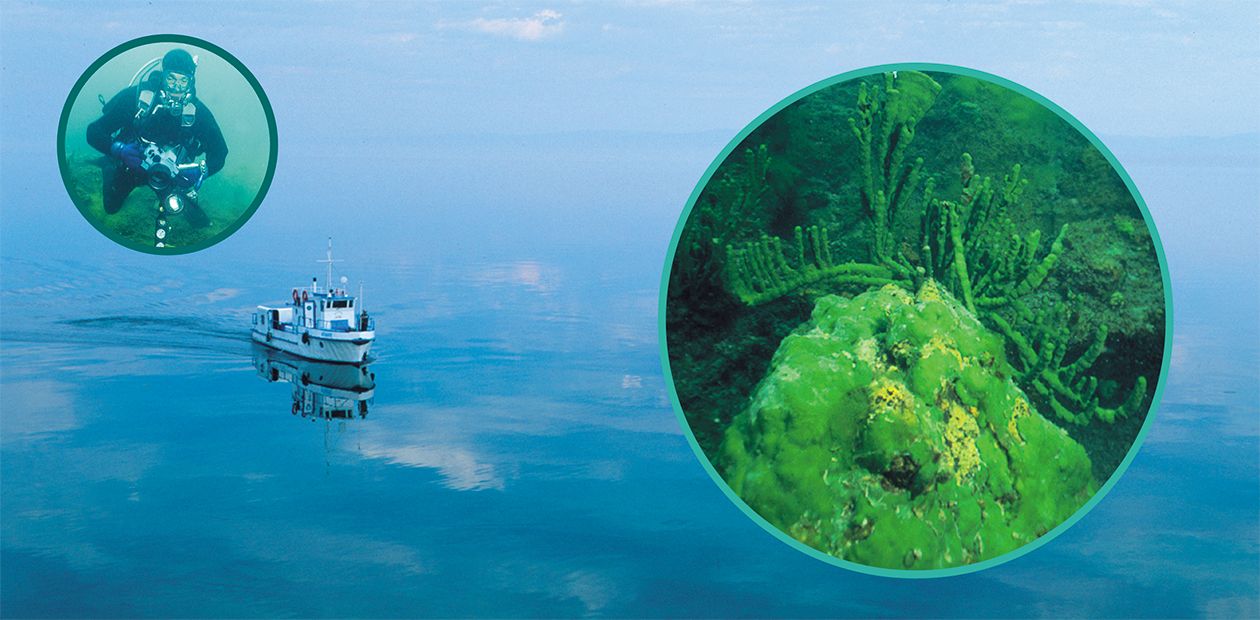Lake Baikal as a Natural Laboratory
Baikal is a rift lake occupying the largest basin in the Baikal rift system where volcanic eruptions ceased as late as thousands of years ago. According to paleolimnological evidence, the lake has existed in its present shape for “just” a few millions of years. The long history of Lake Baikal in an active tectonic area and its isolation produced exceptionally diverse and most unusual flora and fauna.
Besides the boundless water surface, Lake Baikal is a wonderful submarine world strikingly changing with depth. The species diversity of the Baikal fauna is comparable to that in hundreds and thousands of lakes in Eurasia. The lake is really the heart of Eurasian biodiversity, especially because about 60 % of its animal species are endemic, that is, they exist nowhere else.
Lake Baikal is the world deepest and oldest lake with its age around 25—30 million years. The lake is the Earth’s richest storage of surface fresh water containing about one fifth of the global unfrozen freshwater resources, more than in the North American five Great Lakes taken together.
Baikal is a rift lake occupying the largest basin in the Baikal rift system where volcanic eruptions ceased as late as thousands of years ago. According to paleolimnological evidence, the lake has existed in its present shape for “just” a few millions of years. The long history of Lake Baikal in an active tectonic area and its isolation produced exceptionally diverse and most unusual flora and fauna.
Besides the boundless water surface, Lake Baikal is a wonderful submarine world strikingly changing with depth. The species diversity of the Baikal fauna is comparable to that in hundreds and thousands of lakes in Eurasia. The lake is really the heart of Eurasian biodiversity, especially because about 60 % of its animal species are endemic, that is, they exist nowhere else.
Scientists have successfully explored Baikal for years. The Baikal bottom became accessible at any lake depth due to the famous Pisces submersibles used since 1977.
In the early 1990s, Pisces reached the deepest lake point and discovered mysterious deepwater vents which released groundwater and methane.
The bottom of the old lake has its own secrets. Its sedimentary record formed through the over 30-million-years long geological history of the basin is a unique archive of Cenozoic climates and environments in Central Asia.
Studies of Lake Baikal through two recent decades have been run jointly with people from many countries brought together by the Baikal International Center for Environmental Research (BICER), which was founded in 1990 on the initiative of academician Valentin Koptyug. Since that time, more than two thousand scientists, engineers, and students from all over the world have visited Baikal.
1990. Establishment of the Baikal International Center for Environmental Research (BICER)
The Baikal Drilling Project is another encouraging example of international scientific cooperation. Seven underwater boreholes from 40 m to deeper than 1000 m have been drilled since 1993 as part of the project and stripped a “layer cake” of lake sediments that deposited for eight million years. The drilling experiment of 1997 was remarkable by the recovery of gas hydrates found for the first time in a freshwater environment.
In 1997 UNESCO inscribed Lake Baikal on the list of World Natural Heritage sites. This decision, made after an international expertise, was achieved owing to many years of systematic research of the lake and its surroundings by scientists from the SB RAS Irkutsk and Buryat Science Centers and from foreign institutions.

















